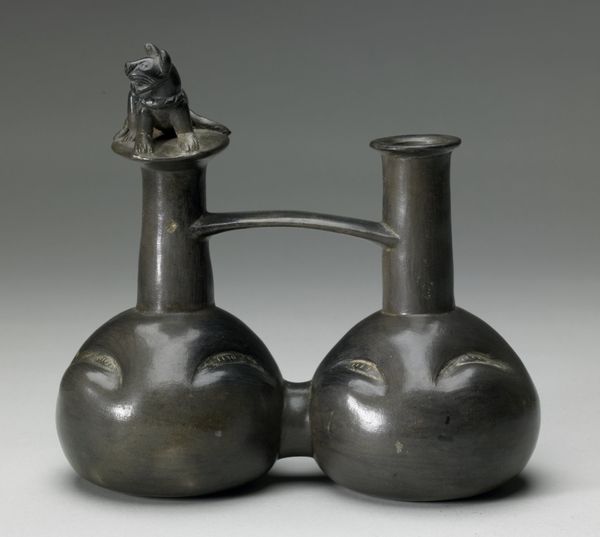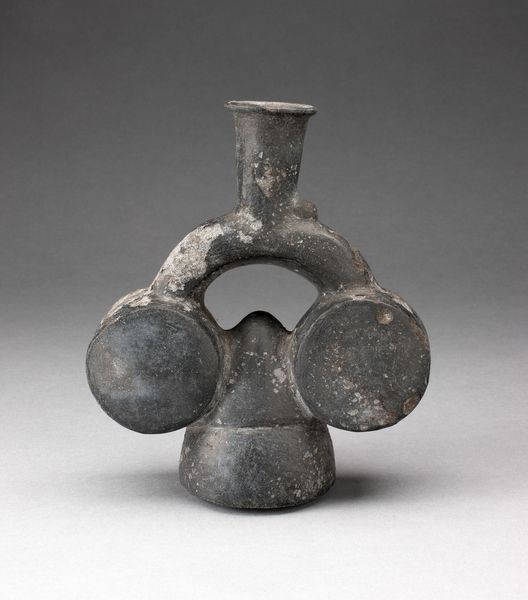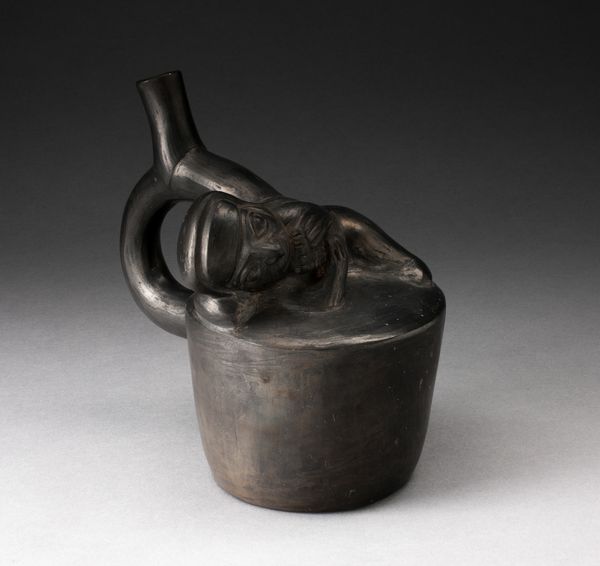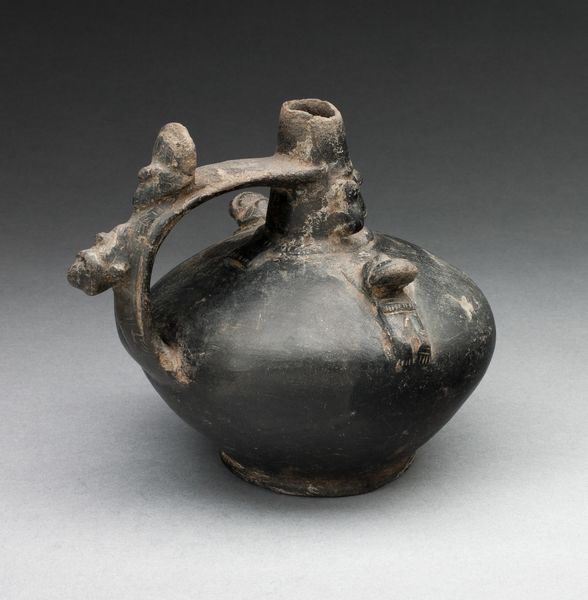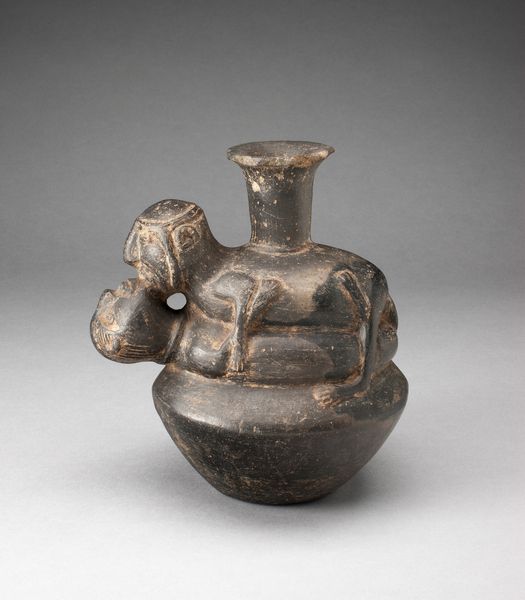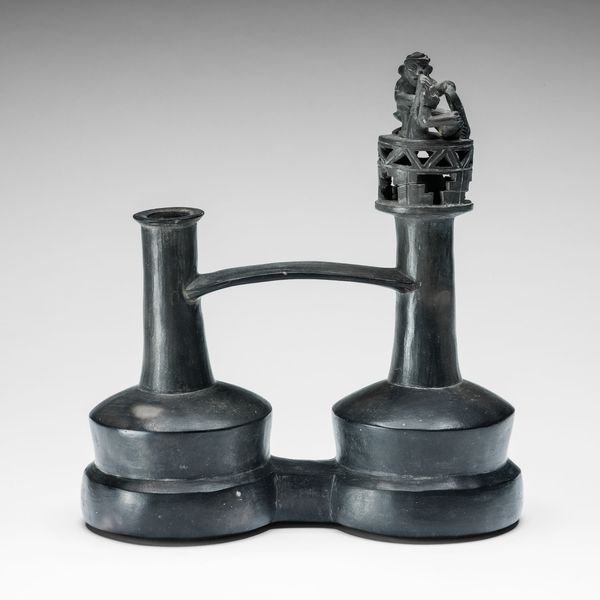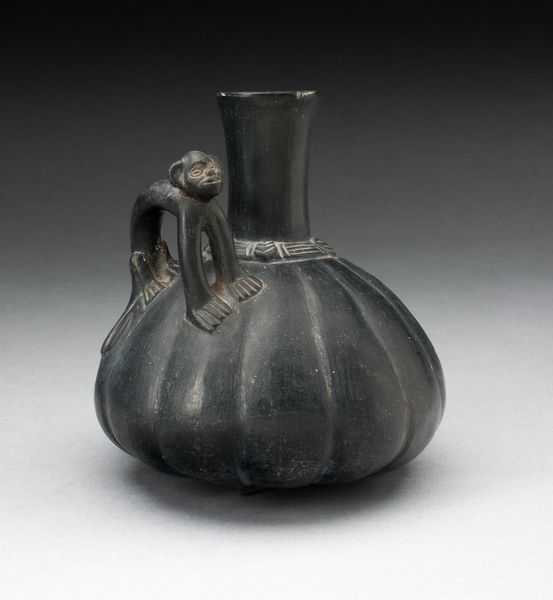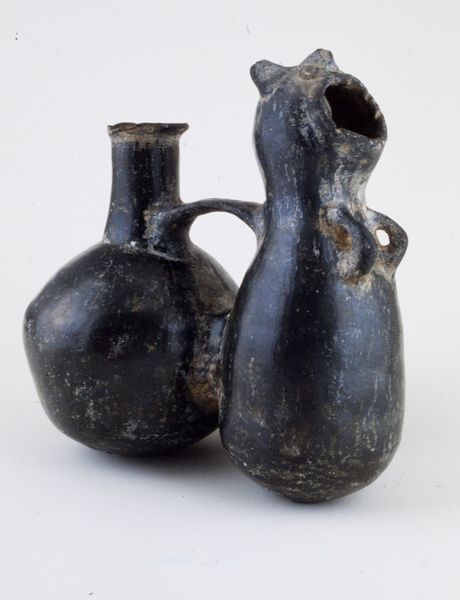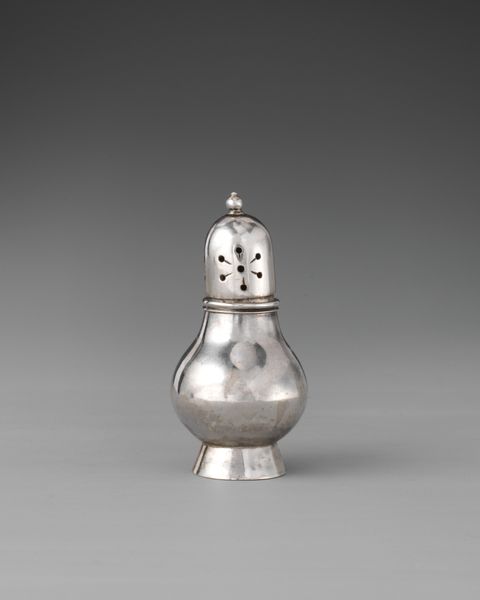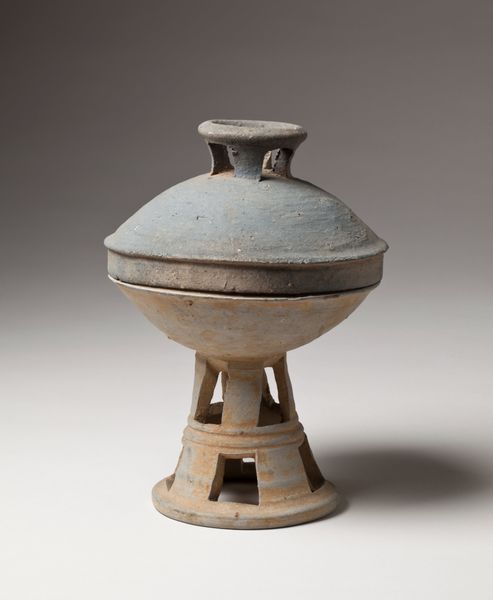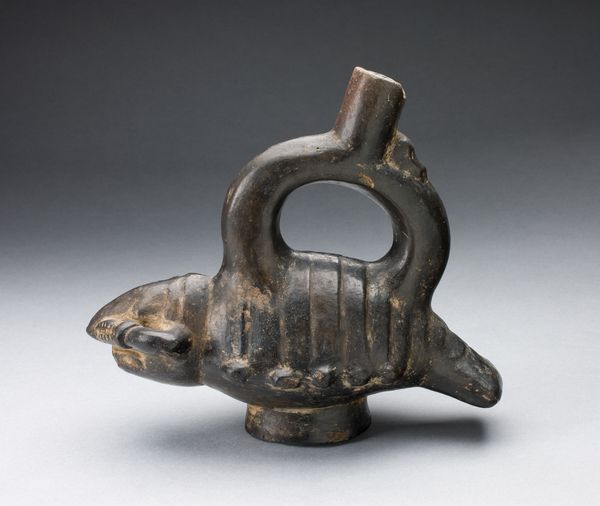
ceramic
#
ceramic
#
figuration
#
indigenous-americas
Dimensions: 18.4 × 22 cm (7 1/4 × 8 5/8 in.)
Copyright: Public Domain
Curator: Here we have a Chimú double-chambered vessel made of ceramic. It is believed to date sometime between 1200 and 1450. The piece features a seated figure perched atop one of the vessel's spouts. Editor: Right away, I’m struck by the stoic loneliness of that little guy up there. He’s so still. It's monochrome – almost like a grayscale photograph turned into a solid object. Gives it an ancient, otherworldly feel. Curator: Indeed. The Chimú civilization flourished on the northern coast of Peru, and their artistic tradition, heavily influenced by earlier cultures like the Moche, reveals intricate craftsmanship, especially in ceramics like this. The double vessel form itself held symbolic importance in their culture, often linked to duality and the interconnectedness of opposing forces. Editor: The dual form— almost like conjoined twins in ceramic form… I find myself wondering, were they just really good at making pottery, or did the shape have a specific use, maybe even spiritual? I mean, why bother linking them? Curator: Functionally, it might have been for liquid distribution. Spiritually, you’re on the right track. These vessels were often used in ritualistic practices, where liquids like water or chicha, a fermented corn drink, would be poured between the chambers, symbolizing communication or exchange with the spirit world. The seated figure likely represents an important ancestor, deity, or even a shaman. Editor: I see him as this watchful guardian, perched up high as if to signal wisdom, maybe a messenger sitting on the edge of realities. I almost want to pick it up and feel its weight and see what pours out… What sort of echoes might I uncover? Curator: While we can only speculate about individual interpretations, it's fascinating to consider the convergence of artistry, technology, and symbolism embedded within these ancient forms, inviting us to consider the tangible and intangible forces that shaped pre-Columbian societies. Editor: It reminds us that even everyday objects could contain whole worlds. These works of the ancient cultures force us to connect past to the present—reminding us we stand on a layered narrative we must always be aware of.
Comments
No comments
Be the first to comment and join the conversation on the ultimate creative platform.
